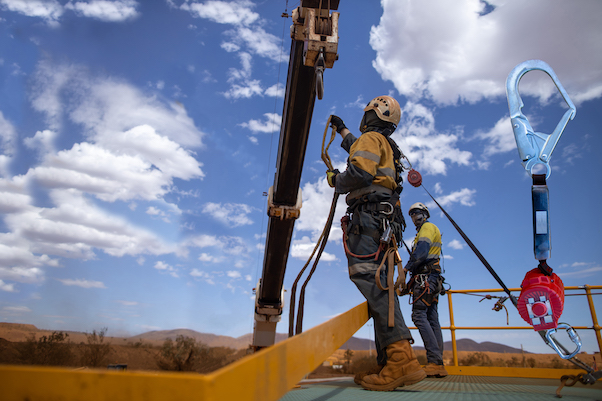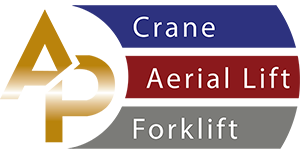Services
Aerial Lift TrainingForklift Operator Certification
Instructor Courses
Mobile Crane Operator Certification
Online Training
Crane Operator Training
Overhead Crane Training
Rigging and SignalPerson Training
All Purpose Crane Training offers crane operator training on-site or off-site. Providing National accredited crane operator certification meeting OSHA ANSI standards for crane operators to become certified.
1926.1401
1926.1402
1926.1403
1926.1404
1926.1405
1926.1406
1926.1407
1926.1408
1926.1409
1926.1410
1926.1411
1926.1412
1926.1413
1926.1414
1926.1415
1926.1416
1926.1417
1926.1418
1926.1419
1926.1420
1926.1421
1926.1422
1926.1423
1926.1424
1926.1425
1926.1426
1926.1427
1926.1428
1926.1429
1926.1430
1926.1431
1926.1432
1926.1433
1926.1434
1926.1435
1926.1436
1926.1437
1926.1438
1926.1439
1926.1440
1926.1441
1926.1442

- (a) Application.
- (1) Paragraphs (b), (c)(3), (e) and (f) of this section apply to all equipment covered by this subpart except tower cranes.
- (2) Paragraphs (c)(1), (c)(2), (d), (g), (j) and (k) of this section apply to all equipment covered by this subpart.
- (3) Paragraphs (c)(4) and (h) of this section apply only to tower cranes.
- (b) Boom walkways.
- (1) Equipment manufactured after [INSERT DATE 1 YEAR AND 90 DAYS AFTER DATE OF PUBLICATION IN THE FEDERAL REGISTER] with lattice booms must be equipped with walkways on the boom(s) if the vertical profile of the boom (from cord centerline to cord centerline) is 6 or more feet.
- (2) Boom walkway criteria.
- (i) The walkways must be at least 12 inches wide.
- (ii) Guardrails, railings and other permanent fall protection attachments along walkways are:
- (A) Not required.
- (B) Prohibited on booms supported by pendant ropes or bars if the guardrails/railings/attachments could be snagged by the ropes or bars.
- (C) Prohibited if of the removable type (designed to be installed removed each time the boom is assembled/disassembled
- (D) Where not prohibited, guardrails or railings may be of any height up to; but not more than, 45 inches.
- (c) Steps, handholds, ladders, grabrails, guardrails and railings.
- (1) Section 1926.502(b) does not apply to equipment covered by this subpart.
- (2) The employer must maintain in good condition originally-equipped steps, handholds, ladders and guardrails/railings/grabrails.
- (3) Equipment manufactured after [INSERT DATE 1 YEAR AND 90 DAYS AFTER DATE OF PUBLICATION IN THE FEDERAL REGISTER] must be equipped so as to provide safe access and egress between the ground and the operator work station(s), including the forward and rear positions, by the provision of devices such as steps, handholds, ladders, and gaurdrails/railings/grabrails. These devices must meet the following criteria:
- (i) Steps, handholds, ladders and gaurdrails/railings/grabrails must meet the criteria of SAE /J185 (May 2003) (incorporated by reference, see 1926.6) or ISO 11660-2:1994(E) (incorporated by reference, see 1926.6) except where infeasible.
- (ii) Walking/stepping surfaces, except for crawler treads, must have slipresistant features/properties (such as diamond plate metal, strategically placed grip tape, expanded metal, strategically placed grip tape, expanded metal, or slip-resistant paint).
- (4) Tower cranes manufactured after [INSERT DATE 1 YEAR AND 90 DAYS AFTER DATE OF PUBLICATION IN THE FEDERAL REGISTER] must be equipped so as to provide safe access and egress between the ground and the cab, machinery platforms, and tower (mast) by the provision of devices such as steps, hand-holds, ladders, and guardrails/railings/grabrails. These devices must meet the following criteria:
- (i) steps, handholds, ladders, and guardrails/railings/grabrails must meet the criteria of ISO 11660-1:2008(E) (incorporated by reference, see 1926.6) and ISO 11660-3:2088(E) (incorporated by reference, see 1926.6) or SAE J185 (May 2003) (incorporated by reference, see 1926.6) except where infeasible.
- (ii) Walking/stepping surfaces must have slip-resistant features/properties (such as diamond plate metal, strategically placed grip tape, expanded metal, or slip-resistant paint).
- (d) Personal fall arrest and fall restraint systems. Personal fall arrest system components must be used in personal fall arrest and fall restraint systems and must conform to the criteria in 1926.502(d) except that 1926.502(d)(15) does not apply to components used in personal fall arrest and fall restraint systems. Either body belts or body harnesses must be used in personal fall arrest and fall restraint systems.
- (e) For non-assembly/disassembly work, the employer must provide and ensure the use of fall protection equipment for employees who are on a walking/working surface with an unprotected side or edge more than 6 feet above a lower level as follows:
- (1) When moving point-to-point:
- (i) On non-lattice booms (whether horizontal or not horizontal).
- (ii) On lattice booms that are not horizontal.
- (iii) On horizontal lattice booms where the fall distance is 15 feet or more.
- (2) While at a work station or any part of the equipment (including the boom, of any type), except when the employee is at or near draw-works (when the equipment is running), in the cab, or on the deck.
- (f) For assembly/disassembly work, the employer must provide and ensure the use of fall protection equipment for employees who are on a walking/working surface with an unprotected side or edge more than 15 feet above a lower level, except when the employee is at or near draw-works (when the equipment is running), in the cab, or on the deck.
- (g) Anchorage criteria.
- (1) Sections 1926.502(d)(15) and 1926.502(e)(2) apply to equipment covered by this subpart only to the extent delineated in paragraph (g)(2) of this section.
- (2) Anchorages for personal fall arrest and positioning device systems.
- (i) Personal fall arrest systems must be anchored to any apparently substantial part of the equipment unless a competent person, from a visual inspection, without an engineering analysis, would conclude that the criteria in 1926.502(d)(15) would not be met.
- (ii) Positioning device systems must be anchored to any apparently substantial part of the equipment unless a competent person, from a visual inspection, without an engineering analysis, would conclude that the criteria in 1926.502(e)(2) would not be met.
- (iii) Attachable anchor devices (portable anchor devices that are attached to equipment) must meet the anchorage criteria in 1926.502(d)(15) for personal fall arrest systems and 1926.502(e)(2) for positioning device systems.
- (3) Anchorages for fall restraint systems. Fall restraint systems must be anchored to any part of the equipment that is capable of with-standing twice the maximum load that an employee may impose on it during reasonably anticipated conditions of use.
- (h) Tower cranes.
- (1) For work other than erecting climbing, and dismantling, the employer must provide and ensure the use of fall protection equipment for employees who are on a walking/working surface with an unprotected side or edge more than 6 feet above a lower level, except when the employee is at or near draw-works (when the equipment is running). in the cab, or the deck.
- (2) For erecting, climbing, and dismantling work, the employer must provide and ensure the use of fall protection equipment for employees who are on a walking/working surface with an unprotected side or edge more than 15 feet above a lower level.
- (i) [Reserved.]
- (j) Anchoring to the load line. A personal fall arrest system is permitted to be anchored to the cranes/derrick's hook (or other part of the load line) where all of the following requirements are met:
- (1) A qualified person has determined that the set-up and rated capacity of the crane/derrick (including the hook, load line and rigging) meets or exceeds the requirements in 1926.502(d)(15).
- (2) The equipment operator must be at the work site and informed that the equipment is being used for this purpose.
- (3) No load is suspended from the load line when the personal fall arrest system is anchored to the crane/derrick's hook (or other part of the load line).
- (k) Training. The employer must train each employee who may be exposed to fall hazards while on, or hoisted by, equipment covered by this subpart on all of the following:
- (1) the requirements in this subpart that address fall protection.
- (2) the applicable requirements in 1926.500 and 1926.502.
